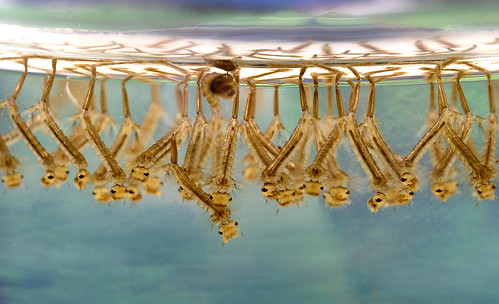Larvae develop through four stages, or instars, after which they metamorphose into pupae. At the end of each instar, the larvae molt, shedding their skin to allow for further growth.
As seen on the picture, larvae make dense groups in standing water. A shift in the feeding behavior of those mosquitoes helps explain the rising incidence of West Nile virus in North America. It appears that the darker structure at the top center of the image is one pupa.
Français : Larves de moustiques du genre Culex. Comme le montre la photo, les larves forment des groupes compacts dans les eaux stagnantes. Un changement dans le comportement nutritionnel de ces moustiques permet d'expliquer l'augmentation de la prévalence du West Nile virus en Amérique du nord.
Português: Larvas de mosquitos do género Culex. Como é visível na foto, as larvas formam grupos compactos em águas estagnadas. Uma mudança no comportamento alimentar destes mosquitos permite explicar o aumento da prevalência do vírus West Nile na América do Norte.
Svenska: Mygglarver av släktet Culex.
 mosquito larvae
mosquito larvae

